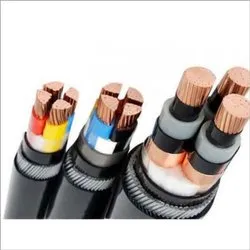A Comprehensive Guide to 125 Amp Wire Size Calculation and Voltage Drop
In this comprehensive guide, we’ll delve into the world of 125 amp wire size calculation and voltage drop considerations. Whether you’re a DIY enthusiast or a professional electrician, understanding the right wire size is crucial for safe and efficient electrical installations. We’ll break down the key concepts, provide practical examples. Let’s get started!
Part 1: Understanding 125 Amp Wire Size
Before we jump into calculations, let’s lay the foundation by understanding the significance of 125 amp service and why choosing the correct wire size is paramount.
1.1 What Is 125 Amp Service?
125 amp service refers to the electrical capacity of a circuit or service panel. It’s commonly used in residential and small commercial applications. Ensuring the right wire size for a 125 amp service is essential to prevent overheating, fires, and other electrical hazards. Can be used for electric dryers and other appliances.
1.2 The NEC 310.16 Chart
The National Electrical Code (NEC) provides guidelines for wire ampacity. The NEC 310.16 chart is a valuable resource for determining the allowable ampacity of different wire sizes. It considers factors like wire material and insulation type.

1.3 The 80% NEC Rule
To maintain safety margins, the NEC recommends sizing wires to handle no more than 80% of their rated ampacity. This rule accounts for variations in load and temperature.
Part 2: Determining 125 Amp Wire Size
Now that we understand the basics, let’s dive into the steps for determining the appropriate wire size for a 125 amp service. Read what size wire for an electric dryer guide.
2.1 Step-by-Step Guide
- Calculate the total load of your electrical devices and appliances.
- Determine the amperage rating of your circuit breaker or service panel.
- Refer to the NEC 310.16 chart to find the wire size that matches or exceeds your calculated load while adhering to the 80% NEC rule.
Example: Suppose your total load is 100 amps. You would choose a wire size that can safely carry 125 amps (80% of 125 amps) according to the NEC chart.
2.2 Copper vs. Aluminum Wires
When selecting wire material, consider the pros and cons of copper and aluminum. Copper offers better conductivity, but aluminum is often more cost-effective for large installations. Ensure your choice complies with local codes and standards.

Part 3: Accounting for Voltage Drop
Voltage drop can significantly impact electrical performance, especially in long-distance wiring. Let’s explore how to account for it.
3.1 Why Voltage Drop Matters
Voltage drop occurs as electricity travels through a wire, leading to a decrease in voltage at the end of the circuit. Excessive voltage drop can cause equipment malfunctions and reduce efficiency.
3.2 Allowable Voltage Drop Percentages
- 3%: Ideal for critical loads, like medical equipment.
- 5%: Suitable for general-purpose circuits.
- 10%: Acceptable for non-critical applications like lighting.
3.3 Calculating Voltage Drop
Voltage drop is calculated using the formula:
VD=(2∗K∗I∗L)/CM
Where:
- VD = Voltage Drop
- K = Conductivity constant (12.9 for copper, 21.2 for aluminum)
- I = Current in amperes
- L = One-way length of the wire in feet
- CM = Cross-sectional area of the wire in circular mils
Example: Let’s say you have a 125 amp load, 200 feet of wire, and a copper wire with a cross-sectional area of 40,000 circular mils. Calculate the voltage drop using the formula.
Part 4: Calculating 125 Amp Wire Size with Voltage Drop
To ensure your wire size accommodates voltage drop, consider factors like wire length, material resistivity, and amperage.
4.1 Circular Mils
Circular mils represent wire diameter. The larger the circular mils, the lower the resistance. Use this information to select an appropriate wire size.
4.2 Voltage Drop at Different Voltages
Voltage drop is more critical at lower voltages (e.g., 12V) and less impactful at higher voltages (e.g., 220V). Adjust your calculations accordingly based on your application.
Example: Explore how voltage drop varies for 12V and 220V systems.
Part 5: Using the 125 Amp Wire Size Calculator
Simplify your calculations with our wire size calculator. It automates the process, considering voltage drop, and helps you make informed decisions for your specific project.
Part 6: 125 Amp Wire Size Charts
For quick reference, we’ve compiled wire size charts for various distances and voltages, considering different allowable voltage drop percentages. Check 50 amp wire size and 200 amp wire size guide.
6.1 Wire Size Charts
Table 2: Wire Size Chart for 3% Voltage Drop (Copper)
| Distance (ft) | 12V | 120V | 220V |
|---|---|---|---|
| 0-100 | 1/0 | 4/0 | 3/0 |
| 101-200 | 2/0 | 3/0 | 2/0 |
| 201-300 | 3/0 | 2/0 | 1/0 |
| 301-400 | 4/0 | 1/0 | 2/0 |
| 401-500 | 250 kcmil | 2/0 | 3/0 |
Table 3: Wire Size Chart for 10% Voltage Drop (Aluminum)
| Distance (ft) | 12V | 120V | 220V |
|---|---|---|---|
| 0-100 | 3/0 | 350 kcmil | 3/0 |
| 101-200 | 4/0 | 300 kcmil | 4/0 |
| 201-300 | 250 kcmil | 2/0 | 250 kcmil |
| 301-400 | 350 kcmil | 1/0 | 350 kcmil |
| 401-500 | 500 kcmil | 2/0 | 500 kcmil |
Conclusion
In this comprehensive guide, we’ve demystified 125 amp wire size calculation and the critical consideration of voltage drop. Choosing the right wire size is fundamental to the safety and performance of your electrical system. Remember to use the provided wire size calculator and charts to make informed decisions for your projects. Whether you’re lighting up a room or powering a workshop, accurate wire sizing is the key to a job well done.
FAQ 125 Amp Wire Size
What size wire do I need for a 125 amp panel?
For a 125 amp panel, you will typically need copper wire with a minimum wire size of 1/0 AWG (American Wire Gauge) or aluminum wire with a minimum wire size of 2/0 AWG. However, it’s essential to consult the National Electrical Code (NEC) and local electrical codes to ensure compliance with specific installation requirements and conditions.
What size breaker do I need for a 125 amp sub panel?
To protect a 125 amp sub panel, you should use a 125 amp circuit breaker. The breaker’s rating should match the ampacity of the sub panel to ensure safe operation and overcurrent protection. Always adhere to NEC guidelines and local electrical codes when selecting and installing circuit breakers.
What size wire is good for 120 amps?
For a 120 amp load, you should use copper wire with a minimum wire size of 2/0 AWG or aluminum wire with a minimum wire size of 3/0 AWG. These wire sizes will safely carry a 120 amp current while considering factors such as voltage drop and code compliance.
How many amps can a 125 amp panel handle?
A 125 amp panel can handle up to 125 amps of electrical load. However, it’s important to understand that the 125 amp rating refers to the panel’s maximum ampacity. To ensure safe operation, you should balance the total connected load within the panel with the panel’s ampacity, and you must not exceed this limit.







